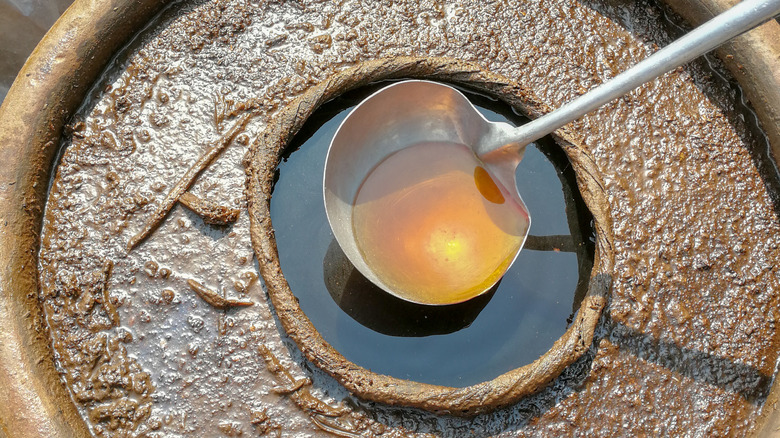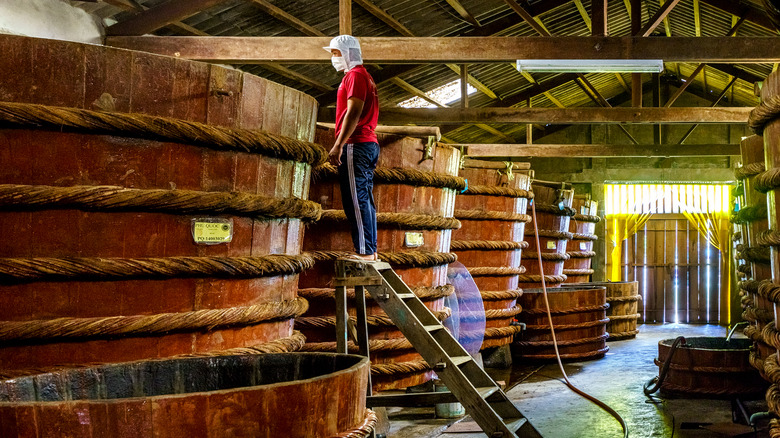The Intricate Process Used To Make Vietnamese Fish Sauce
Fish sauce brings out a savouriness irreplaceable in Vietnamese condiments, Thai noodle sauces, and Indonesian marinades. Full of umami-rich nucleotides, the sauce elicits the same satisfaction as aged hard cheeses or soy sauce. Intensified when paired with a fermented alcohol beverage, umami foods amplify other flavors in addition to their taste, per Science & Wine.
Humans discovered the magic of fermenting fish thousands of years ago — approximately 7th century B.C. Origins point to Greek settlements on the Black Sea, but Carthaginians in Tunisia and other civilizations throughout the Mediterranean also widely utilized the sauce, via World History Encyclopedia. Whether Roman and Greek production influenced the ubiquity of fish sauce in Southeast Asia is debated. Despite trade between the two regions, most food scholars see a clearer link to Chinese soy sauce production.
Regardless, the Vietnamese variety of Nước Mắm is now the nation's symbol and exported worldwide, according to South China Morning Post. Let's dive into how it's made.
Vietnamese fish sauce is fermented from anchovies in wooden barrels or ceramic vats
As per its namesake, it all starts with fish. Phung Hung, a producer on Phú Quốc island, procures their catch with their fleet of fishing boats, but that's not the case for all manufacturers. Immediately after a haul of mostly cá cơm (black anchovies), the fish is drained and salted, kickstarting fermentation before the boat reaches shore. Next, it's loaded into wooden barrels, where it's kept for a full year. The resultant sauce is slowly drained and added back, but never stirred. Continuous taste-testing determines when it's ready, per CNN Travel.
Not all fish sauce is manufactured with the same method. Smaller family producers purchase a medley of small fish from a market and use rows of outdoor ceramic vessels, rather than wooden barrels. They layer the fish and salt and stir it once fermentation starts. The process is extra time-consuming — the ceramic vats must be moved indoors when it rains. Once a salt crust develops, anywhere from five days to four weeks, the result is sieved and sometimes aged, per Vietnam Jeep Tours.
The less-stirred sauces produced in Phú Quốc are often called "extra virgin," and esteemed as the best in the world for their sweet finish, per Our Daily Brine. However, each producer offers their own flavor palate — perfect for experimenting when cooking classic Vietnamese dishes.

